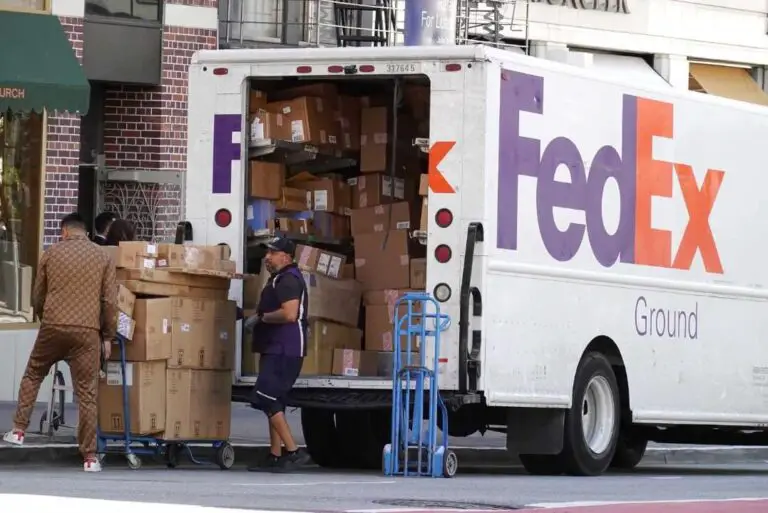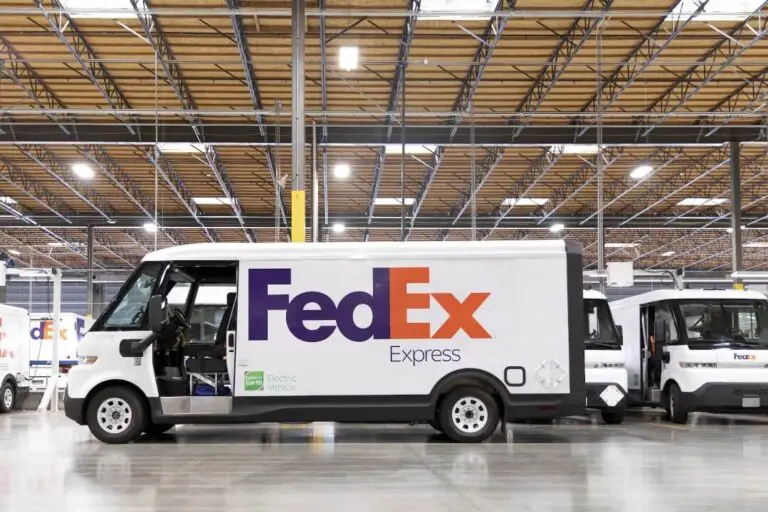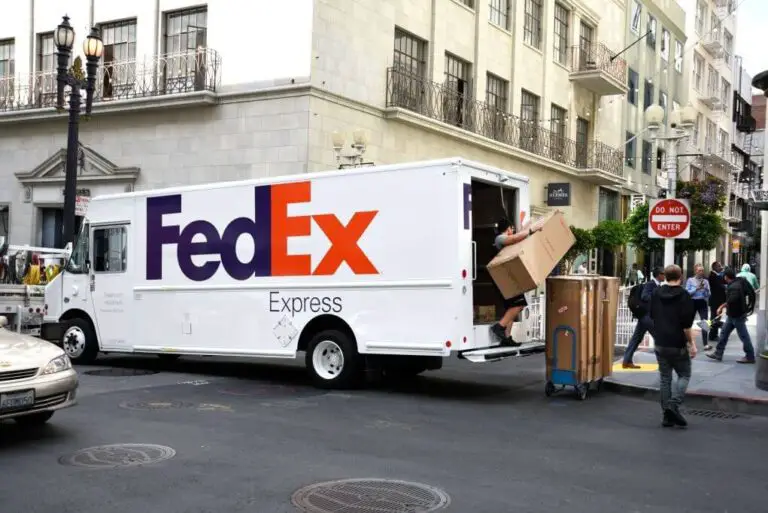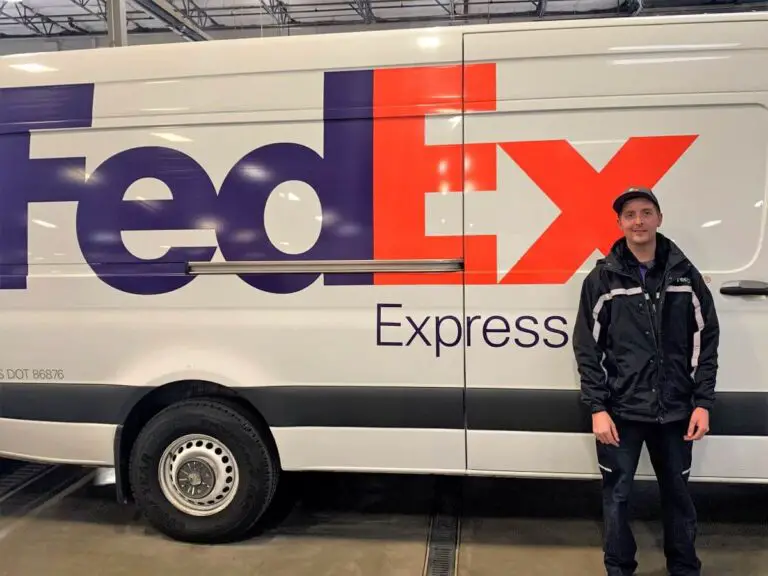What Does In Transit Mean FedEx? Complete Guide

Have you ever ordered a package and watched the tracking status eagerly, only to see the ambiguous message “in transit” at some point in the journey? As a FedEx customer tracking a time-sensitive package delivery, that generic status can be frustrating and concerning when you expected the item days ago and have no clarity on the actual location or delivery date.
So what does “in transit” really mean for your FedEx package, and what should you do if your package seems stuck in that status limbo? This comprehensive guide will explain the ins and outs of FedEx’s “in transit” term, so you can understand what’s happening behind the scenes and track your deliveries with greater confidence.
Overview of the FedEx Shipping Process
Before diving into the specifics of the “in transit” status, it’s helpful to understand the overall workflow of a FedEx delivery. Once you request a package shipment and hand over the item to FedEx:
- A tracking label is generated with a unique identification number that will allow you to monitor the delivery status in real-time
- The package is scanned and logged into the FedEx tracking system at the initial pick-up location
- FedEx sorts the package at a facility to determine its destination route and appropriate transport method
- The item is transported via delivery truck or plane to various FedEx facilities and hubs along the route to its final address
- As the package reaches the destination city, it travels to the local FedEx facility to await final delivery
- A FedEx driver loads the sorted package on a truck for the final delivery route to the recipient’s address
- The driver attempts delivery, scans the package again, and logs a successful delivery or failure/exception in the tracking system
Throughout this entire process, FedEx customers can track their package’s step-by-step journey by referencing the online tracking status and delivery updates.
What Does “In Transit” Specifically Mean?
When you check your FedEx tracking status and see the message “in transit“, that means your package has been picked up by FedEx and is en route to its intended delivery address. More specifically:
- The “in transit” message indicates that the package has entered the FedEx logistics network and the delivery process has begun after initial pick-up
- However, “in transit” does not necessarily mean the package is literally moving or sitting on a truck or plane when you see that status
- The package may be sitting static in a FedEx sorting facility, waiting to be loaded onto a transport vehicle to the next hub
- So “in transit” means your package is in the FedEx system and is progressing towards its destination, despite potentially waiting in a facility for a period of time
The key thing to note is that “in transit” means your package is still making reasonable forward progress within FedEx’s delivery network. As long as you see some updates being logged related to arriving and departing FedEx facilities, that indicates it is being scanned and sorted to get closer to the final delivery address even if it seems temporarily stalled.
How Long Is a FedEx Package “In Transit”?
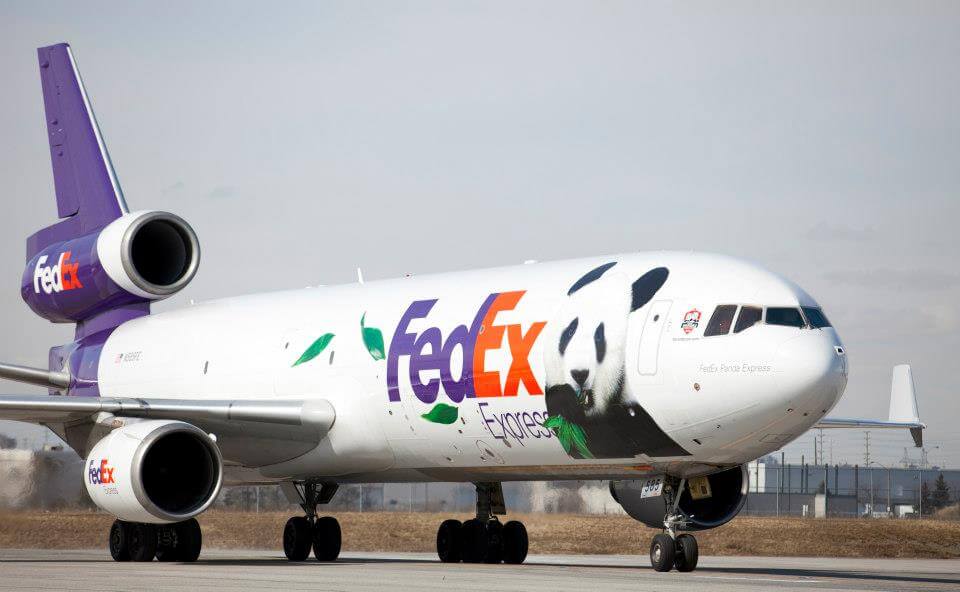
The amount of time a FedEx package remains in the “in transit” status can range from just a few hours to a number of days, depending on:
- The shipping speed selected (Express, Priority Overnight, 2-Day, Ground, etc.)
- The distance and destination of the package
- Any unexpected delays or exceptions like severe weather or customs checks
FedEx Ground shipments may show “in transit” over a period 1-5 business days until delivery, while faster overnight or 2-day FedEx Express items may only display “in transit” for a matter of hours before achieving “out for delivery.”
International FedEx packages with customs clearance may also get stuck “in transit” up to a week or longer during that review process. So the duration of the “in transit” phase really comes down to the expected delivery timeline based on origin, destination, service type, and other variables.
Tracking “In Transit” Delivery Progress
During that ambiguous “in transit” period, accurate tracking updates are crucial for predicting the expected delivery date of your FedEx package. As noted above, reasonable logistics progression is key even if the package seems temporarily stalled at various facilities.
Here are some examples of common “in transit” scans and messages you may see on the online FedEx tracking tool and mobile app to indicate logistics progression:
- Left FedEx origin facility
- In transit – arriving on time
- In transit – arriving early
- Arrived at FedEx location
- Package transferred to destination facility
- Arrived at sorting facility
As long as you see that consistent forward motion between facilities, you can confirm your package is still working its way closer to your address. Any delivery delay exceptions or status updates indicating a customs, weather delay, or address correction typically means intervention is required.
Why FedEx Packages Get Stuck “In Transit”
Despite FedEx’s best efforts, packages do occasionally get stuck in the “in transit” phase without reliable delivery predictions. Here are some of the most common reasons your FedEx tracking status may remain unchanged for multiple days:
- Severe weather conditions like hurricanes, snowstorms or extreme heat/cold that delay transport
- Clearance issues during customs inspections for international packages
- Requested delivery attempt during a holiday period or unofficial business closure
- Incorrect or incomplete delivery address provided by the sender
- Unforeseen flight delays or transportation problems
- General volume backlogs at facilities during peak holiday shipping seasons
- Invalid tracking number or lost barcode scan preventing progress updates
While FedEx diligently manages weather risks, flight schedules, vehicle routes and contingency plans, some disruptions remain unavoidable. That’s why the customer service team is available to investigate stuck packages without delivery estimates.
What to Do If Your FedEx Delivery Is Delayed?
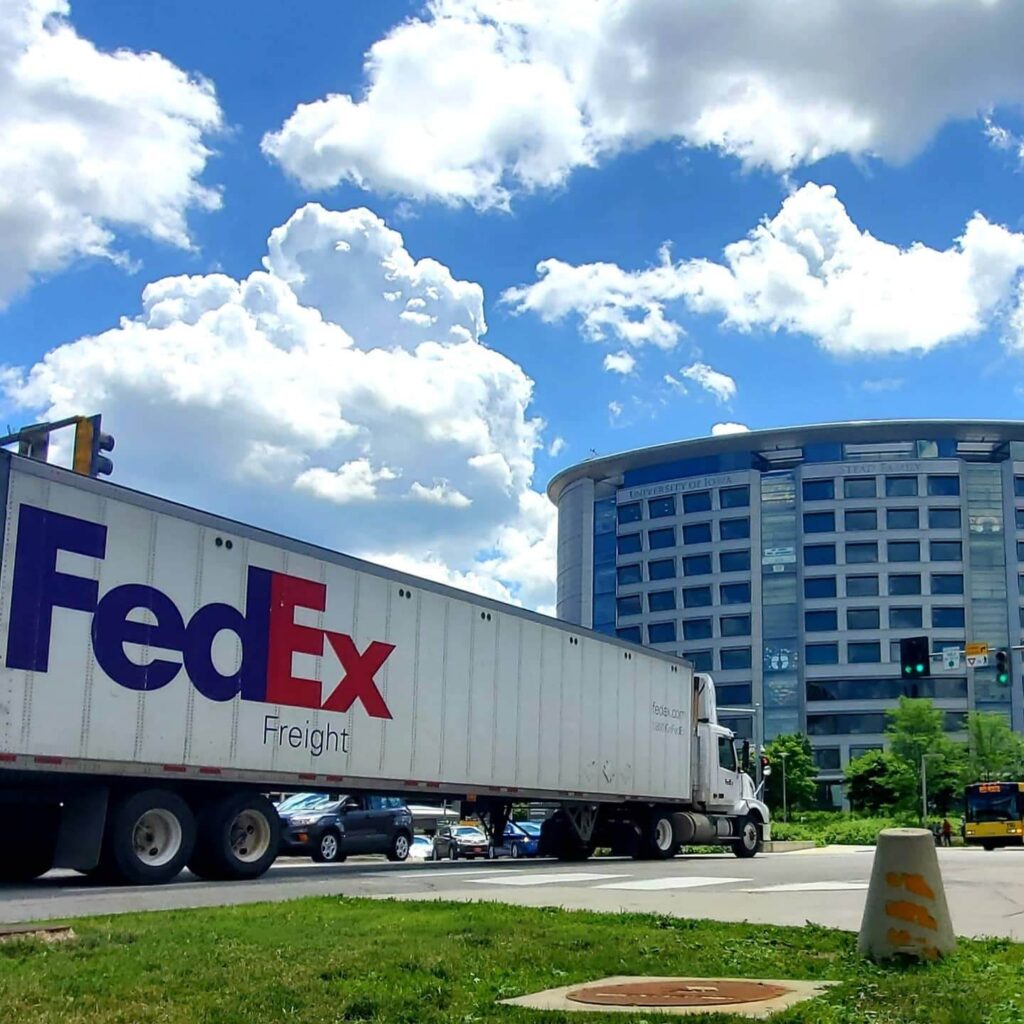
If your FedEx package tracking shows no tangible progress for multiple days beyond the original “scheduled delivery” promise, take the following steps:
- Visit the tracking page and input your number to refresh the status again
- Check for any delivery exceptions or error messages explaining the delay
- Use the FedEx virtual assistant chat to inquire about latest tracking updates
- Call customer service directly to create a trace investigation on your package
- Discuss options like rerouting delivery to a retail hold location or returning the package to the sender if unrecoverable
By being proactive communicating with FedEx representatives as soon as you notice an exception, you have the best chance of resolving transit issues swiftly. Doing so prevents packages from being permanently lost in undiscovered backlogs.
Impact of Shipping Speed on “In Transit” Time
One aspect that significantly impacts how long a FedEx package spends in the “in transit” status phase is the type of shipping speed selected when sending the item initially. Some general examples across basic FedEx consumer options:
- FedEx Ground economy is 1-5 business days in transit on average
- FedEx Express Saver is 2-3 business days in transit on average
- FedEx 2-Day service standards ensure just 1-2 days in transit
- FedEx Overnight gets packages in transit under 18 hours on average
Additionally, business-oriented solutions like FedEx First Overnight, FedEx International Next Flight Out, or real-time logistics monitoring available for critical healthcare shipments all work to minimize the “in transit” period.
So if you have a truly urgent package, paying a premium shipping rate for accelerated FedEx Express solutions can provide peace of mind knowing your item won’t be stuck in transit indefinitely. Just recognize expedited services come at a higher cost.
Why Accurate Addresses Are so Important?
One simple explanation for a FedEx package getting perpetually stuck with only “in transit” tracking updates is an inaccurate shipping address originally provided. If the destination street name, apartment number, city name, zip code, etc. contain errors:
- Sorting machines routing the package for final truck delivery may fail
- FedEx drivers can’t reasonably find the local address for hand-off attempts
- Actually locating the missing item in hundreds of thousands of packages becomes exponentially harder
That’s why FedEx heavily emphasizes double and triple checking the delivery address details at the point of shipment. Something as minor as a transposed house number prevents successful delivery and risks the item being lost in the logistics system indefinitely.
While the FedEx customer service agents can try to determine correct recipient addresses, home businesses without proper unit labeling remain vulnerable to delivery failures through no direct fault of the courier.
Future “In Transit” Experience Enhancements
FedEx continually evaluates emerging technologies like blockchain, artificial intelligence, autonomous transportation methods, real-time weather mapping, and predictive data analytics to improve upon the modern customer delivery experiences.
As this innovation roadmap progresses, FedEx customers can expect:
- More accurate machine learning-based delivery date estimates
- Enhanced shipment location data down to the specific truck or cargo container
- Proactive customer notifications when unexpected transit delays threaten scheduled delivery
- Exact instances of when and where packages are loaded/unloaded
How Customers Can Prepare For and Manage Packages “In Transit”?
While FedEx improves the transit experience behind the scenes through tech innovation, there are also some simple ways for customers to take greater control around track deliveries themselves:
- Provide complete addresses – As mentioned earlier, incorrect or incomplete destination addresses are a primary culprit for packages getting perpetually stuck without reliable delivery estimates. Take an extra moment before shipping to confirm names, unit numbers, and zip codes.
- Utilize delivery confirmation – Upgrading to FedEx delivery signatures, direct signatures, adult signatures, etc. can reduce issues of drivers miss-delivering packages or the recipient unavailable to receive items. Higher security around final delivery hand-off alleviates transit risks.
- Insure valuable contents – For very sensitive contents, purchasing shipment insurance protects against permanent item loss or damage, even arising from unreliable delivery experiences. So even when rare transit mishaps occur, you have financial peace around valuable package contents.
- Manage expectations – Understand that even with premier services, extreme weather events or global supply chain congestion can disrupt FedEx delivery workflows. Setting reasonable date expectations helps ease frustrations around modest mid-transit delays.
Ultimately, consumers must play an active role along with FedEx to achieve package delivery success amidst millions of shipments handled daily across air, ocean and road routes. Taking responsibility around address accuracy, delivery verification, insurance and reasonable outcome expectations demonstrates shared commitment to the customer experience.
Conclusion
Understanding your package status while in the hands of a transportation provider is crucial. For FedEx customers, grasping the nuances around an “in transit” tracking message eliminates frustration and equips better planning.
Essentially, an item in transit means it is still making stepwise progress within the FedEx shipping network, despite potential days of seeming dormancy within sorting facilities. Regular scans as packages arrive and depart warehouses give assurance they are not lost or abandoned indefinitely.
Arm yourself with the above insight around factors influencing in transit periods, available customer support, and tips for failure avoidance, and your next FedEx shipment can be tracked confidently regardless of stops and starts. Empowered by greater clarity around shipping terminology and operating conditions, you and FedEx seamlessly become partners ensuring packages transition smoothly from origin sender hands to your anxious recipient grasp.

